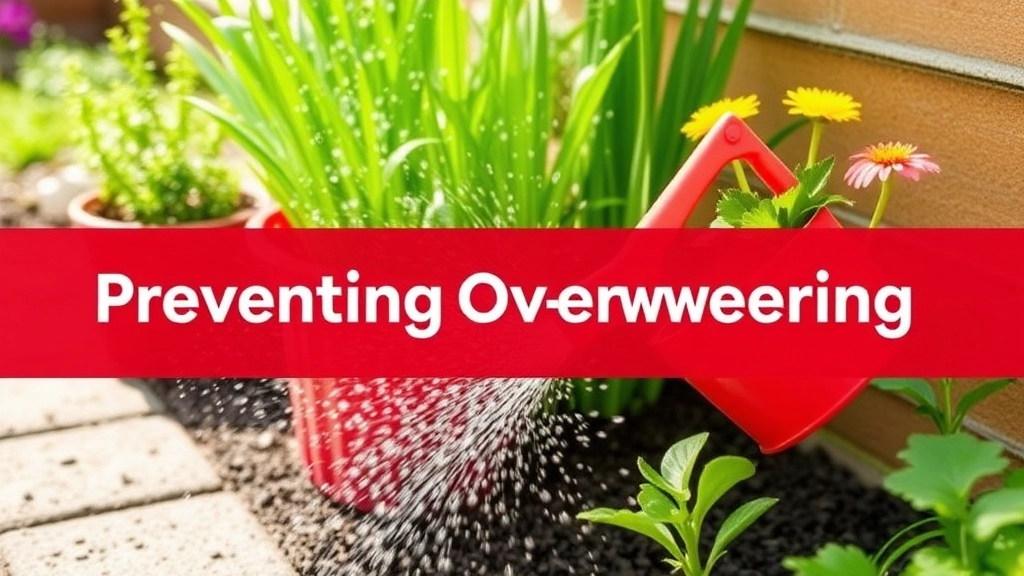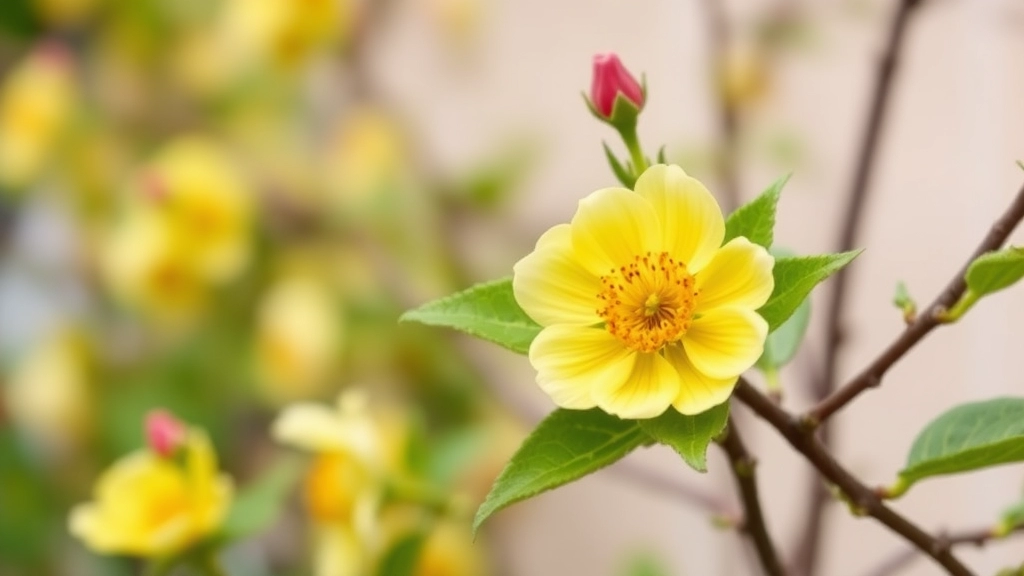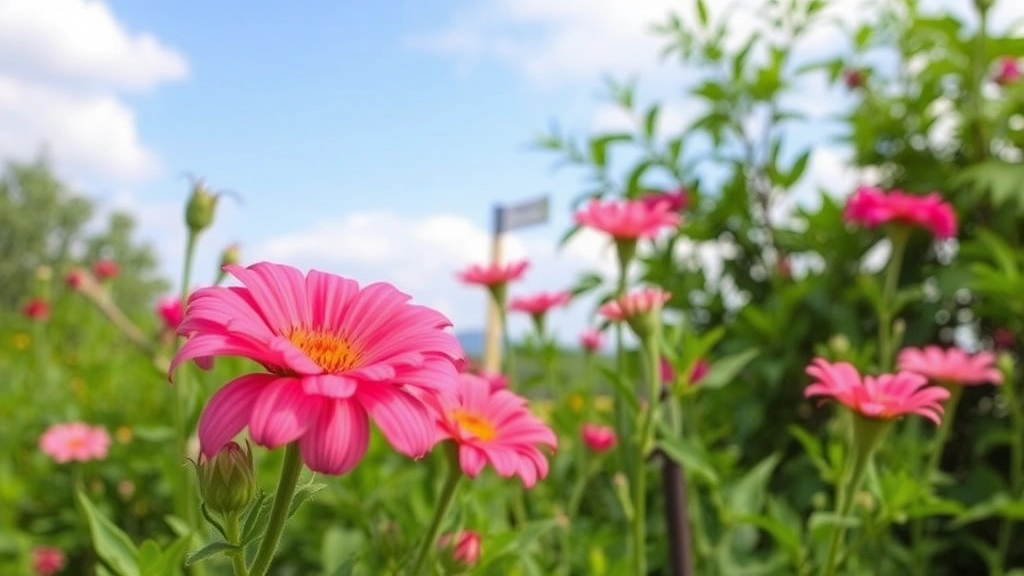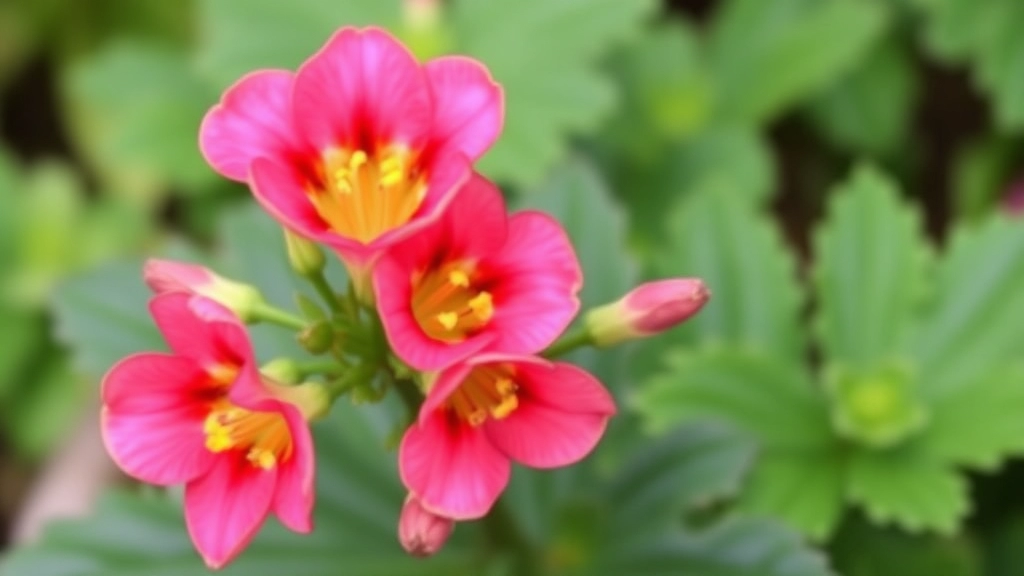Care for Your Kalanchoe Flaming Katy
Taking care of your Kalanchoe Flaming Katy can be straightforward and rewarding. This vibrant houseplant thrives with the right light, water, and soil conditions. To start, place your Flaming Katy in a bright spot with indirect sunlight. Direct sun can scorch the leaves, so a well-lit room is ideal. When it comes to watering, less is more. Allow the soil to dry out between waterings to prevent root rot, a common issue with overwatering.
Optimal Growing Conditions
For optimal growth, use a well-draining soil mix and ensure your plant is in a pot with drainage holes. Flaming Katy prefers moderate humidity and temperatures between 60-85°F.
Fertilizing and Maintenance
- Fertilize sparingly, about once a month during the growing season.
- Deadheading spent flowers will encourage new blooms, keeping your plant looking fresh and vibrant.
Pest Management
If pests like aphids or mealybugs appear, treat them promptly with insecticidal soap. With these care tips, your Kalanchoe Flaming Katy will flourish both indoors and outdoors.
Optimal Light Conditions for Flaming Katy
Are you struggling to get your Flaming Katy to thrive? One of the most crucial factors is light.
Flaming Katy, also known as Kalanchoe blossfeldiana, requires specific light conditions to flourish.
Watering Guidelines: Preventing Overwatering

Are you worried about overwatering your Flaming Katy? You’re not alone! Many plant lovers face this common issue, and it can be a real game-changer for your plant’s health.
Understand Your Plant’s Needs
Flaming Katy, or Kalanchoe blossfeldiana, is a succulent that thrives on a careful watering routine. Here’s how to nail it:
- Check the Soil: Always feel the top inch of the soil. If it’s dry, it’s time to water. If it’s still moist, hold off for a few days.
- Water Deeply: When you do water, give it a good soak. Let the water drain out of the bottom for healthy roots.
- Frequency Matters: Generally, watering every 2-3 weeks is a good rule of thumb. Adjust based on your home’s humidity and temperature.
- Seasonal Changes: In winter, you can cut back on watering. The plant goes into a dormant phase and needs less moisture.
Signs of Overwatering
Keep an eye out for signs that you might be giving your Flaming Katy too much love:
- Yellowing Leaves: This is often the first sign that something’s off.
- Soft, Mushy Stems: If they feel squishy, it’s a red flag.
- Foul Odour: A musty smell can indicate root rot.
Tips to Prevent Overwatering
- Use Well-Draining Soil: A mix designed for succulents will help prevent water retention.
- Choose the Right Pot: Ensure it has drainage holes. This is crucial for letting excess water escape.
- Adjust Your Routine: If you’re unsure, it’s better to underwater than overwater. Your Flaming Katy will bounce back with a little neglect.
Best Soil Mix for Healthy Growth
When it comes to ensuring your Flaming Katy thrives, the right soil mix is crucial. You might wonder, “What type of soil is best for my plant?”
Choosing the Right Soil Mix
Flaming Katy, also known as Kalanchoe blossfeldiana, prefers a well-draining soil mix to prevent root rot and promote healthy growth. Here are some key components to consider:
- Cactus Mix: A cactus or succulent potting mix is ideal, as it contains the necessary drainage properties.
- Perlite or Pumice: Adding perlite or pumice to the mix enhances aeration and drainage. Aim for a ratio of 1 part perlite to 3 parts potting mix.
- Organic Matter: Incorporate a small amount of organic matter, like compost, to provide essential nutrients without compromising drainage.
DIY Soil Mix Recipe
If you’re feeling adventurous, you can create your own soil mix:
- 2 parts cactus mix
- 1 part perlite
- 1 part compost
This combination ensures that your Flaming Katy has the nutrients it needs while allowing excess water to escape.
Signs of Poor Soil Conditions
Keep an eye out for signs that your soil may not be suitable:
- Yellowing Leaves: This can indicate overwatering, often due to compacted soil.
- Stunted Growth: If your plant isn’t thriving, it might be time to reconsider your soil mix.
By using the right soil mix, you’re setting your Flaming Katy up for success. For more tips on how to care for your Kalanchoe, check out our complete care guide for Kalanchoe blossfeldiana. Additionally, if you notice your leaves turning red, you might want to read about the causes and solutions for red leaves.
Ideal Temperature and Humidity for Flaming Katy

When nurturing your Flaming Katy, understanding its temperature and humidity preferences is essential for vibrant blooms. You might wonder, “What conditions do I need to create for my plant to thrive?”
Temperature Requirements
Flaming Katy, or Kalanchoe blossfeldiana, thrives best in moderate temperatures.
- Ideal Range: Aim for temperatures between 18°C and 24°C (65°F to 75°F).
- Avoid Extremes: Keep it away from cold drafts or extreme heat, as temperatures below 10°C (50°F) can stress the plant.
Humidity Levels
Humidity plays a crucial role in the health of your Flaming Katy.
- Optimal Humidity: This plant prefers a humidity level around 40% to 60%.
- Dry Environments: If your home tends to be dry, especially in winter, consider using a humidifier or placing a water tray with pebbles near the plant.
Tips for Maintaining Conditions
- Monitor Temperature: Use a thermometer to keep track of the temperature around your plant.
- Adjust Humidity: If humidity drops, mist the leaves lightly, but avoid over-saturating them.
Maintaining the right temperature and humidity not only supports growth but also encourages flowering.
Fertilizing Flaming Katy: When and How Often
When it comes to keeping your Flaming Katy thriving, fertilizing is a crucial aspect that can make all the difference. You might be wondering, âHow often should I fertilize my plant?â or âWhat type of fertilizer is best?â These are common concerns among plant enthusiasts.
How to Deadhead and Prune for Longer Blooms

So, you’ve got your Flaming Katy looking fabulous, but are you wondering how to keep those vibrant blooms coming?
Deadheading is your secret weapon here. This simple process involves snipping off the faded flowers, which encourages the plant to produce more blooms.
Here’s how to do it:
- Use clean scissors or pruning shears: This helps prevent any potential infections.
- Cut just above the leaf node: This encourages new growth and keeps your plant looking tidy.
- Remove any yellowing leaves: This not only improves appearance but also allows the plant to focus its energy on healthy growth.
Pruning is another essential step, especially if your Flaming Katy is getting leggy. Here’s what to keep in mind:
- Timing is key: Late winter or early spring is ideal for a good prune.
- Cut back about one-third of the plant: This helps rejuvenate it and promotes bushier growth.
- Focus on dead or damaged stems: This keeps your plant healthy and encourages new blooms.
By regularly deadheading and pruning, you’ll keep your Flaming Katy blooming longer and looking its best.
VII. Common Pests and How to Deal With Them
As you nurture your Flaming Katy, you may encounter some unwelcome visitors. Understanding common pests and how to manage them is crucial for maintaining the health of your plant.
Common Pests
- Mealybugs
- These small, white, cotton-like insects often cluster in leaf joints.
- They can cause yellowing and wilting of leaves.
- Spider Mites
- Tiny and often invisible to the naked eye, spider mites create fine webs on the plant.
- They thrive in dry conditions and can lead to leaf drop.
- Aphids
- Small, green or black insects found on new growth.
- They suck sap from the plant, leading to stunted growth.
- Scale Insects
- These pests appear as small, brown bumps on stems and leaves.
- They can weaken the plant significantly.
How to Deal with Pests
- Regular Inspection
- Check your Flaming Katy weekly for any signs of pests.
- Early detection makes management easier.
- Manual Removal
- For mealybugs and scale, use a cotton swab dipped in rubbing alcohol to remove them.
- A strong jet of water can dislodge spider mites.
- Insecticidal Soap
- Use a commercial insecticidal soap to treat infestations.
- Ensure to cover both the tops and undersides of leaves.
- Neem Oil
- A natural pesticide, neem oil can be effective against various pests.
- Apply it in the evening to avoid leaf burn.
- Maintain Humidity
- Increase humidity around your Flaming Katy to deter spider mites. Regular misting or a pebble tray can help.
- Quarantine New Plants
- Always isolate new plants for a few weeks before introducing them to your collection. This prevents the spread of pests.
For more detailed care tips, check out our Complete Guide to Kalanchoe Plant Care. If you’re dealing with specific issues like leaf spots, our Kalanchoe Leaf Spot Causes, Treatment, and Prevention guide can be particularly helpful.
Preventing Root Rot and Other Diseases
So, you’re loving your Flaming Katy, but suddenly you notice some yellowing leaves. Yikes! Root rot can sneak up on you, and it’s a common worry for many plant parents.
What is Root Rot?
Root rot is a sneaky disease caused by overwatering or poor drainage. It leads to mushy roots, which can ultimately kill your plant if not addressed quickly.
Signs of Root Rot:
- Yellowing leaves
- Wilting despite adequate watering
- A foul smell from the soil
How to Prevent Root Rot:
Here are some straightforward tips to keep your Flaming Katy thriving:
- Choose the Right Pot: Use pots with drainage holes. This allows excess water to escape, preventing soggy roots.
- Soil Matters: Opt for a well-draining soil mix. A blend of potting soil and perlite or sand works wonders.
- Water Wisely: Water only when the top inch of soil feels dry. This helps avoid overwatering—one of the main culprits of root rot.
- Avoid Water Accumulation: Don’t let your pot sit in water. If you notice water collecting in the saucer, dump it out.
- Keep an Eye on Humidity: Flaming Katy prefers moderate humidity. Too much moisture in the air can contribute to fungal issues.
Other Common Diseases:
While root rot is a major concern, keep an eye out for these pesky problems:
- Powdery Mildew: A white, powdery substance on leaves, usually from high humidity. Improve airflow around your plant.
- Leaf Spot: Brown or black spots on leaves. This can be caused by overwatering or poor air circulation. Remove affected leaves and ensure good airflow.
Tips for Repotting Your Flaming Katy
Repotting your Flaming Katy can be a daunting task, especially if you’re unsure when or how to do it.
Why Repotting Matters
Repotting is essential for maintaining healthy growth and vitality.
- Why? Over time, the soil can become compacted, nutrients may deplete, and the plant may outgrow its pot.
When to Repot
- Signs Your Flaming Katy Needs Repotting:
- Roots are visible through the drainage holes.
- Growth has slowed significantly.
- Soil dries out too quickly.
Choosing the Right Pot
- Size: Select a pot that is 1-2 inches larger in diameter than the current one.
- Material: Terracotta pots are excellent for drainage, while plastic pots retain moisture better.
Preparing for Repotting
- Timing: Spring is the best time to repot, as this aligns with the plant’s active growth phase.
- Soil: Use a well-draining soil mix, ideally formulated for succulents or cacti.
Step-by-Step Repotting Process
- Remove the Plant: Gently take the Flaming Katy out of its current pot.
- Inspect the Roots: Look for any signs of rot or damage. Trim away unhealthy roots.
- Add Fresh Soil: Place a layer of fresh soil at the bottom of the new pot.
- Position the Plant: Center your Flaming Katy in the pot and fill in with more soil, ensuring the roots are covered but the crown remains above the soil line.
- Water: Give it a light watering to help settle the soil, but avoid soaking.
Post-Repotting Care
How to Encourage Re-blooming in Flaming Katy

Have you ever found yourself wondering why your Flaming Katy isn’t blooming again after its initial show? It’s a common concern, and luckily, there are some straightforward ways to coax those vibrant flowers back into action.
Timing is Everything
First off, timing plays a crucial role. After your plant finishes its blooming cycle, give it a rest.
- Cut back on watering: Allow the soil to dry out a bit more than usual.
- Reduce fertilising: Hold off on feeding for about a month.
This rest period is essential for storing energy for the next blooming cycle.
Light, Light, and More Light
Next up, let’s talk about light. Flaming Katy loves the sun!
- Bright, indirect sunlight: Aim for about 6 hours a day.
- Rotate the plant: This helps it get even exposure, promoting balanced growth.
If your plant’s not getting enough light, it may not bloom again.
Temperature Check
Keeping an eye on temperature can also make a difference.
- Ideal range: Keep it between 20°C to 25°C (68°F to 77°F).
- Nighttime dip: A slight drop to around 15°C (59°F) can trigger blooming.
Fertilisng for Flowers
When it’s time to feed your Flaming Katy again, the right fertiliser can work wonders.
- Balanced fertiliser: Use one with equal parts nitrogen, phosphorus, and potassium.
- Frequency: Fertilise every 4-6 weeks during the growing season.
This will provide the nutrients needed for those beautiful blooms.
Pruning for New Growth
Don’t forget about pruning!
- Deadhead spent flowers: This encourages the plant to focus on new blooms.
- Trim back leggy growth: This helps the plant channel energy to the healthier parts.
Patience is Key
Finally, remember that re-blooming takes time.
- Watch for signs: New leaf growth is a good indicator that your plant is gearing up for its next show.
Step-by-Step Guide to Propagating Flaming Katy
Are you looking to expand your collection of Flaming Katy plants or share them with friends? Propagating this vibrant succulent is a rewarding experience that can be done with relative ease. Here’s a straightforward guide to get you started.
Why Propagate Flaming Katy?
Flaming Katy, or Kalanchoe blossfeldiana, is not only a beautiful plant but also an excellent candidate for propagation. You can create new plants from cuttings, which allows you to enjoy more blooms or share with fellow plant lovers.
Seasonal Care: Moving Between Indoor and Outdoor Settings
Are you wondering how to keep your Flaming Katy thriving as the seasons change?
Moving your plant between indoor and outdoor settings can be a game-changer for its health and blooms.
Why Move Your Flaming Katy?
- Natural Light: Outdoor sunlight can boost growth.
- Fresh Air: Outdoor conditions can help with air circulation.
- Humidity Levels: Indoor air can be drier, affecting your plant.
When to Move
- Spring: As temperatures warm up, it’s a great time to transition.
- Autumn: Before the cold sets in, bring it back indoors.
How to Transition
- Acclimatise Gradually:
- Start with a few hours outside.
- Gradually increase exposure over a week.
- Check the Weather:
- Avoid extreme temperatures.
- Bring it in during unexpected cold snaps.
- Monitor Light Levels:
- Indoors, ensure it gets bright, indirect light.
- Outdoors, avoid harsh midday sun.
Signs Your Flaming Katy Needs Adjustments
- Wilting Leaves: Might indicate stress from temperature changes.
- Discoloration: A sign it’s not adapting well to new conditions.
Tips for Indoor Care
- Rotate the Pot: This helps your plant grow evenly.
- Keep Away from Drafts: Protect it from sudden temperature changes.
For more detailed care tips, check out our Optimal Care for Kalanchoe Blossfeldiana Growth guide and learn about the Benefits of Kalanchoe Pinnata for Skin Health.
FAQs on Kalanchoe Flaming Katy Care
What is the best way to water my Flaming Katy?
Water deeply but infrequently: Check the top inch of soil; if it’s dry, it’s time to water. Ensure water drains out from the bottom to keep roots healthy. Generally, watering every 2-3 weeks is a good rule of thumb.
How can I prevent overwatering my Flaming Katy?
Use well-draining soil and a pot with drainage holes: Overwatering is a common issue. Make sure to use a soil mix designed for succulents and a pot that allows excess water to escape.
What are the signs of overwatering?
Look out for yellowing leaves, soft and mushy stems, and a foul odor from the soil. These are indicators that your plant may be getting too much water.
What temperature and humidity levels are ideal for Flaming Katy?
Temperature: Keep it between 18°C and 24°C (65°F to 75°F). Avoid temperatures below 10°C (50°F).
Humidity: Aim for 40% to 60%. If your home is dry, consider using a humidifier or a water tray with pebbles.
How do I deadhead and prune my Flaming Katy?
Deadheading: Use clean scissors to snip off faded flowers just above the leaf node.
Pruning: Late winter or early spring is the best time. Cut back about one-third of the plant to promote bushier growth.
How can I prevent root rot in my Flaming Katy?
Use pots with drainage holes and well-draining soil: Water only when the top inch of soil is dry, and avoid letting the pot sit in water. Ensure moderate humidity to prevent fungal issues.
What are the common diseases to watch out for?
Besides root rot, be on the lookout for powdery mildew (white, powdery substance on leaves) and leaf spot (brown or black spots). Ensure good airflow and avoid overwatering to prevent these issues.
How can I encourage my Flaming Katy to re-bloom?
Rest period: After the initial blooming cycle, cut back on watering and fertilizing for about a month.
Light: Provide bright, indirect sunlight for about 6 hours a day.
Temperature: Maintain a range of 20°C to 25°C (68°F to 77°F) with a slight nighttime dip to around 15°C (59°F).
Fertilizing: Use a balanced fertilizer every 4-6 weeks during the growing season.
Pruning: Deadhead spent flowers and trim back leggy growth to encourage new blooms.
How long does it take for Flaming Katy to re-bloom?
Re-blooming can take some time. Watch for new leaf growth as an indicator that your plant is preparing for its next blooming cycle. Patience is key!
References
-
The Spruce – Kalanchoe blossfeldiana (Flaming Katy) Plant Profile
-
Gardening Know How – Kalanchoe Plant Care: Tips For Growing Kalanchoe Plants
-
The Old Farmer’s Almanac – Kalanchoe: How to Grow and Care for Kalanchoe
